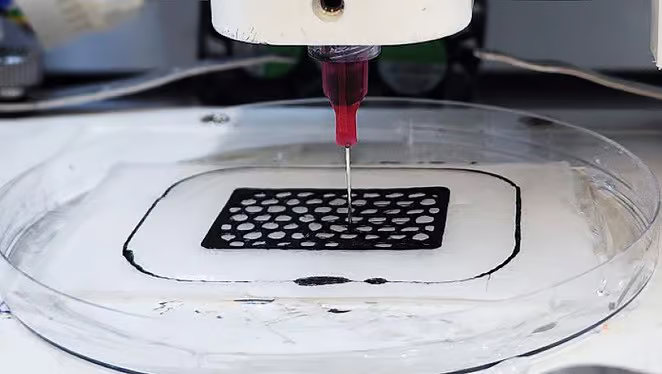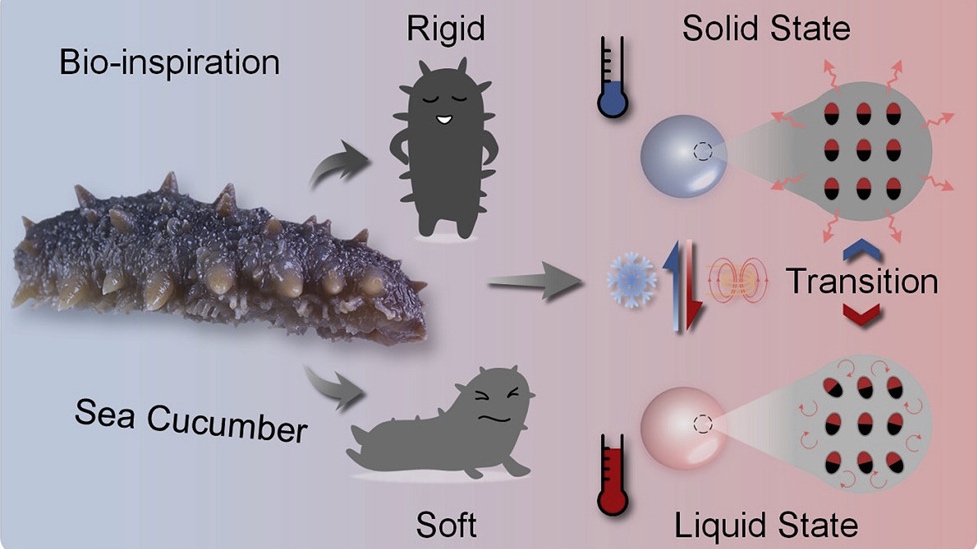One person like that
#materialsscience
One person like that
4 Likes
A carbon-nanotube material is being commercialized by a nanotechnology company in Houston called Dexmat. They call the material "Galvorn". Here's what they say about "Galvhorn":
"Galvorn is conductive at 10 MS/m."
The MS/m units stands for megasiemens per meter. "Mega" is your standard metric prefix. Remember your metric prefixes go kilo-, mega-, giga-, each a factor of 1,000. For highly non-conducting materials, the S/m unit is flipped upside down and the lack of conductivity is called "resistivity" and the unit is called Ohm-meters. Resistance is defined as voltage over current, so conductivity is the other way around, current over voltage, which in the metric system means amperes divided by volts. The "/m" part is "per meter" as you would expect.
10 MS/m conductivity is pretty good. For comparison, copper has a conductivity of 59.6 MS/m, and silver, the most conductive material on the chart I found, is 63.0 MS/m. 8 other metals including gold and aluminum have conductivities higher than this carbon nanotube material. So it's not as conductive as the most conductive metals but otherwise pretty high.
"10x stronger than steel: Weight for weight, Galvorn (at 3.0 GPa) is 10x stronger than some of the strongest forms of steel -- and 30x stronger than stainless steel and other common structural steels. Yet for all its strength it's less than 1/4th the density."
"GPa" stands for "gigapascals" This refers to the compressive yield strength. I learned about this with a previous news bit about a nanolattice material made with DNA origami. Compressive yield strength has to do with how well a material can handle compression in such a way that when the pressure is removed, it returns to its original shape. The number is represented in units of pressure, in this case GPa. In the case of the nanolattice material, they claimed their strongest nanolattices had a compressive yield strength of 4.8 GPa. From what I can tell, the compressive yield strength for steel is usually less than 1 GPa and maxes out around 1.4 for the strongest steels.
"And carbon-negative at scale."
They make a big deal about this and it's true the material, being made of carbon nanotubes, locks up carbon. Enough to matter? I have my doubts.
"Half the weight of aluminum: With a density of 1.5 g/cc compared to aluminum at 2.7 g/cc, the potential for Galvorn in lightweighting applications is boundless. But it's not just lightweight, it's also 30x stronger than aluminum, weight for weight. And did we mention carbon-negative at scale?"
Here g/cc means grams per cubic centimeter as you might expect. Pretty straightforward density unit.
"5-6x lighter than copper: Copper is prized for its conductivity, but it's also notoriously dense, lacks strength and flex tolerance, and is prone to corrosion. Galvorn's conductivity of 10 MS/m today, combined with its lightweightness (1.5 g/cc), super strength (3.0 GPa), durability (> 1M flex life cycles), corrosion resistance, and biocompatibility make it a powerful candidate for existing and new applications that require conductivity."
And on that "biocompatibility" note:
"Biocompatible: Galvorn is inherently non-toxic. As a carbon nanomaterial it can form a good electrical connection with electrolytic fluids, such as saline or other fluids in the body. Because the fibers are soft, flexible, and durable makes them useful as electrodes that can be implanted in the body. In many cases a metal electrode might be stiff enough to cause damage to surrounding tissue, or it might suffer from a low fatigue life and risk breaking apart in the body after a certain amount of time; flexible carbon nanotube electrodes can potentially avoid these drawbacks."
That's an interesting claim as I've previously read carbon nanotubes have high toxicity. I don't know what they might have done with this material to make it non-toxic.
The product comes in 5 varieties: yarn, braided yarn, fabric, film, and fiber.
"Twisted Yarn: Galvorn fibers are twisted into yarn. Good for lighting, e-textiles, motor wires, HPM cathodes, and more."
"Braided Yarn: Galvorn fibers are twisted into yarn. Good for lighting, e-textiles, motor wires, HPM cathodes, and more."
Fabric: Galvorn yarns and fibers woven together to produce fabrics. Good for HPM sources, wearable electrodes, and more."
"Film: Flexible and conductive film / tape made of Galvorn. Good for EMI shielding, batteries, antennas, and more."
"Fiber: Single filament Galvorn fiber that is not twisted, plied, or braided. Good for composites.
5 Likes
5 Comments
One person like that
2 Likes






